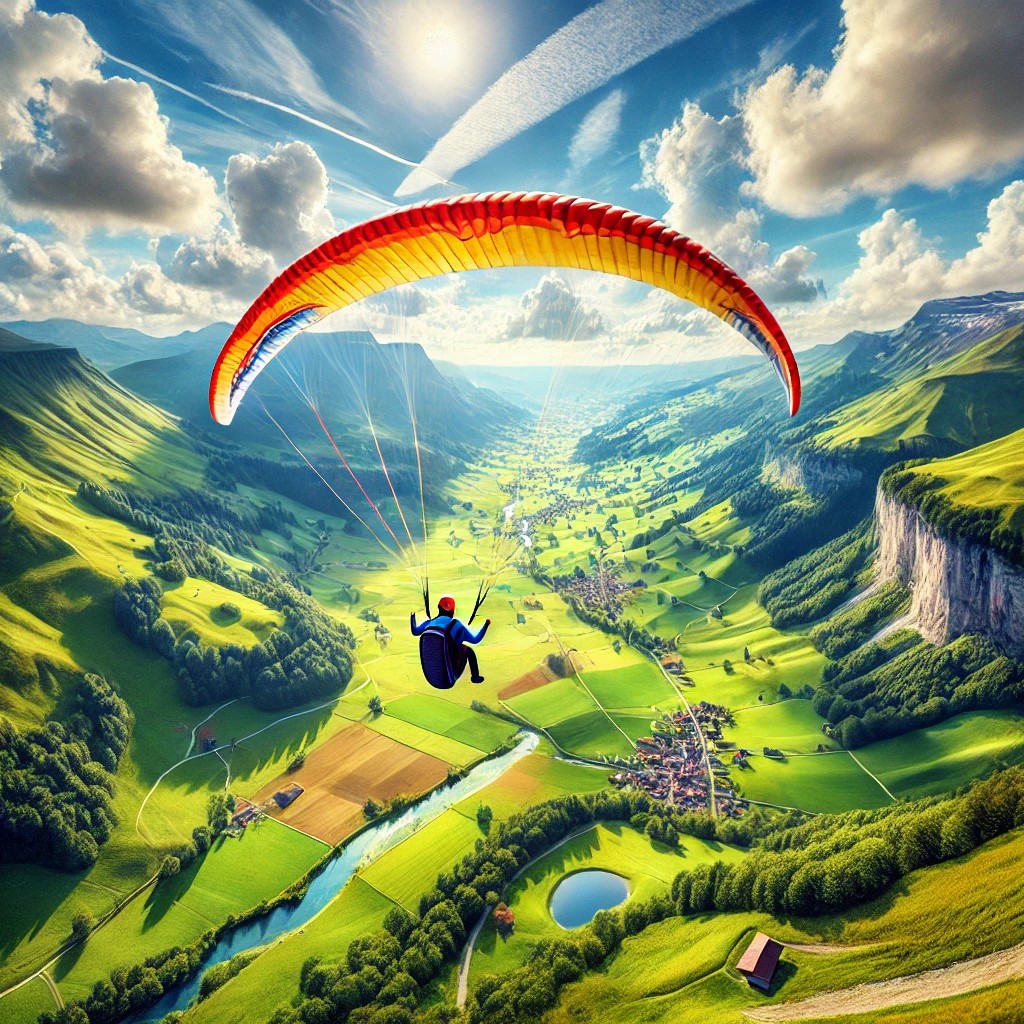
Paragliding: A Comprehensive Exploration of a Thrilling Sport
Introduction
Paragliding is an exhilarating sport that combines adventure, skill, and a connection with nature. It allows individuals to glide through the skies, powered only by the wind and their expertise. Over the years, it has gained immense popularity globally, becoming a favorite among adventure enthusiasts. The sport’s rich history, widespread appeal, and structured frameworks make it a fascinating subject. In this blog, we delve deep into the origins, global popularity, amateur involvement, professional leagues, societal impact, and rules of paragliding.
The Origin and History of Paragliding
It traces its roots to the mid-20th century when the need for controlled human flight spurred innovation. The sport’s origins are closely linked to parachuting and hang gliding. In the 1960s, American climbers sought ways to descend mountains quickly. This curiosity led to the development of flexible wings that allowed controlled descents. Pierre Lemongine, a French parachute inventor, made significant contributions by creating parachutes with better glide ratios.
By the 1970s, it began to emerge as a distinct activity. Frenchman Jean-Claude Bétemps made the first official paraglider flight in 1978. His pioneering work established the foundation for modern paragliding. Throughout the 1980s, advancements in fabric technology and wing design transformed the sport. These developments made paragliding safer, more efficient, and accessible to a wider audience.
Today, it stands as a testament to human ingenuity and our desire to conquer the skies. It has evolved from a niche activity into a globally recognized sport with well-defined rules and practices.
Global Popularity of Paragliding
It enjoys widespread popularity across continents, attracting participants from all walks of life. Countries with mountainous terrain, such as Switzerland, France, and Nepal, are renowned paragliding hubs. These locations offer stunning landscapes and favorable wind conditions. Additionally, countries like Brazil and Turkey host major paragliding events, drawing international attention.
Europe remains a paragliding stronghold, with iconic sites such as Chamonix in France and Interlaken in Switzerland. In Asia, Nepal’s Pokhara Valley is a dream destination for enthusiasts. South America’s Brazil boasts locations like Pórto da Barra, known for vibrant paragliding communities. Africa offers unique experiences, with sites like Cape Town providing breathtaking coastal flights.
The sport’s appeal lies in its accessibility. Unlike other aerial sports, paragliding does not require extensive infrastructure. This simplicity allows individuals in remote regions to participate. Furthermore, social media platforms have amplified its visibility, inspiring new generations to take up the sport.
Amateur Paragliding: Youth and Schools
Amateur paragliding plays a crucial role in fostering grassroots participation. Many countries have introduced programs to make the sport accessible to young people. Schools and clubs often organize beginner courses, providing students with essential skills and safety knowledge.
Youth programs emphasize safety and gradual skill development. Participants begin with ground-handling exercises, learning how to control the wing. Once they gain confidence, they progress to short flights under the supervision of certified instructors. This step-by-step approach ensures that safety remains a top priority.
In some regions, paragliding is incorporated into physical education curricula. This inclusion not only promotes physical fitness but also nurtures teamwork and decision-making skills. Additionally, summer camps often offer paragliding experiences, sparking lifelong passions among participants.
Clubs and associations serve as vital support systems for amateurs. They organize practice sessions, competitions, and social events. These activities create a sense of community and encourage skill enhancement. With the right guidance, many amateur paragliders transition to advanced levels.
Professional Leagues and Competitions
Professional paragliding leagues and competitions showcase the sport’s competitive spirit. These events attract top pilots from around the world, pushing the boundaries of performance. The Paragliding World Cup (PWC) is one of the most prestigious events in the sport. It features multiple rounds held across different countries, testing pilots’ skills in varied conditions.
The Red Bull X-Alps is another iconic event, blending paragliding with endurance hiking. Participants navigate a challenging route through the Alps, covering hundreds of kilometers. This race demands physical fitness, mental resilience, and expert flying skills.
In addition to global competitions, regional leagues play a significant role. Europe, Asia, and South America host numerous events that foster local talent. These competitions often serve as stepping stones for pilots aiming to enter the international stage.
The rise of acrobatic paragliding has added a new dimension to the sport. Events like the Acro World Tour highlight aerial maneuvers and creative performances. These spectacles captivate audiences and demonstrate the versatility of paragliding.
Political and Social Significance of Paragliding
It holds unique political and social significance, transcending its status as a recreational activity. In regions with disputed territories, the sport has been used to promote peace and unity. Joint paragliding events between countries serve as platforms for cultural exchange and mutual understanding.
The sport also plays a role in promoting tourism and economic development. Many rural communities rely on paragliding tourism for their livelihoods. Pilots and spectators contribute to local economies by spending on accommodations, food, and equipment.
From a social perspective, it fosters inclusivity and empowerment. Adaptive paragliding programs enable individuals with disabilities to experience the thrill of flight. These initiatives break barriers and redefine perceptions of ability.
Moreover, paragliding events often double as environmental awareness campaigns. Pilots and organizers advocate for sustainable practices to preserve the natural landscapes that make the sport possible. This activism underscores the interconnectedness of paragliding and environmental stewardship.
Rules and Regulations of Paragliding
Paragliding operates under a framework of rules designed to ensure safety and fair play. The rules vary slightly depending on the location and type of activity. However, several universal principles govern the sport.
- Training and Certification: All participants must undergo training and obtain certification from recognized bodies. This ensures they possess the necessary skills and knowledge.
- Equipment Standards: Paragliders must use equipment that meets safety standards. Regular maintenance and inspections are mandatory.
- Weather Conditions: Flights should only occur in suitable weather conditions. Pilots must assess wind speed, direction, and thermal activity before takeoff.
- Right of Way: Clear guidelines dictate the right of way in the air. For example, descending pilots have priority over ascending pilots.
- Restricted Zones: Certain areas, such as military zones and airports, are off-limits for paragliding. Pilots must adhere to airspace regulations.
- Emergency Procedures: Pilots are required to carry reserve parachutes and other safety gear. They must also be familiar with emergency landing protocols.
These rules not only enhance safety but also promote a culture of responsibility within the paragliding community.
Conclusion
Paragliding stands as a testament to human ingenuity and our eternal desire to explore the skies. Its rich history, global popularity, and structured frameworks make it a remarkable sport. From amateur enthusiasts to professional leagues, it offers opportunities for individuals of all ages and skill levels. Beyond its recreational appeal, the sport’s social and political significance underscores its transformative power.
As more people discover the joys of paragliding, its community continues to grow, united by a shared passion for flight. Whether you are a seasoned pilot or a curious beginner, the world of paragliding invites you to soar to new heights.




